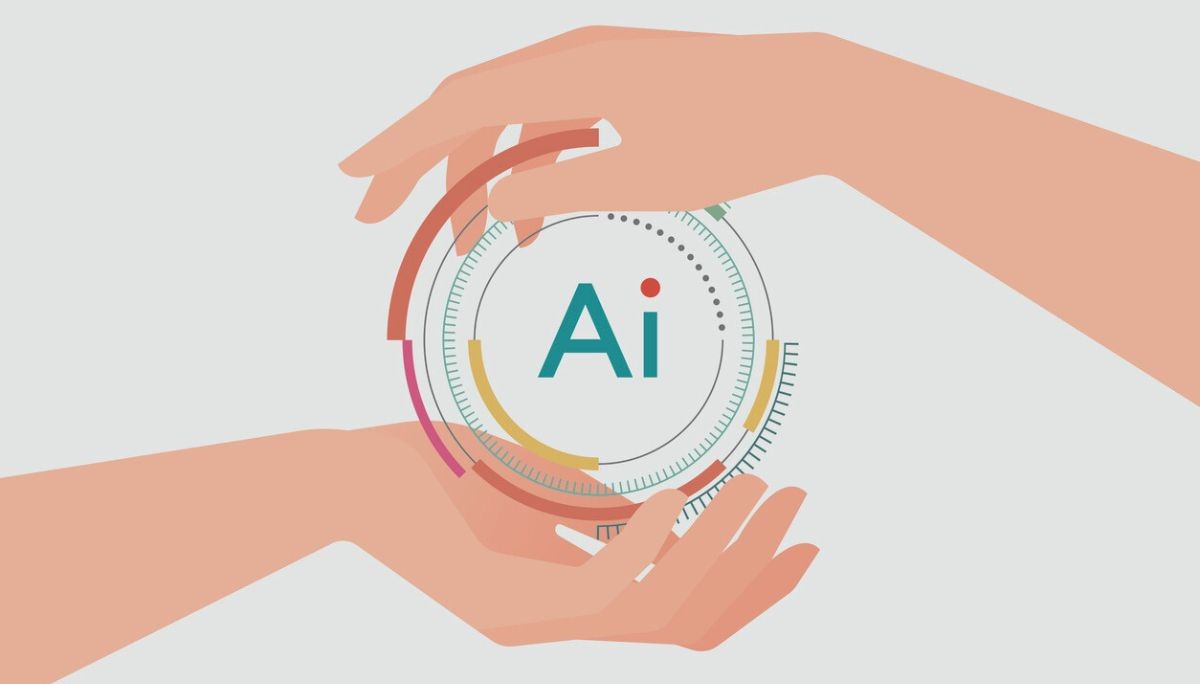GPU Meaning & What Does a GPU Control?
By
Ethan Fahey
•
Sep 4, 2025
A graphics processing unit (GPU) is a specialized chip built to handle images and video at incredible speed. In the early days, computers and gaming consoles relied on the CPU for graphics work until dedicated processors changed the game. What started as a tool for smoother visuals has evolved into a driving force behind artificial intelligence, data analysis, and scientific computing. The rise of the GPU marked a turning point in hardware design, transforming simple graphics controllers into powerful parallel processors capable of running thousands of tasks at once. While GPUs and CPUs share the same foundation, their strengths differ: the CPU manages general operations, while the GPU excels at massive, simultaneous computations.
Key Takeaways
GPUs have evolved from graphics rendering tools to versatile processors capable of accelerating a wide range of computational tasks, including AI, scientific research, and video editing.
The architecture of GPUs allows for parallel processing, making them highly efficient for tasks that require extensive calculations, surpassing the capabilities of traditional CPUs in specific applications.
Different types of GPUs, including integrated, discrete (with discrete GPUs often found in dedicated graphics cards), and virtual, cater to diverse user needs, each providing unique advantages in performance, power efficiency, and scalability.
What is a GPU?

A Graphics Processing Unit (GPU) is a specialized processor designed initially to improve the efficiency of graphics rendering. Approximately 20 years ago, GPUs mainly served to enhance real-time 3D graphics applications, including video games. This advancement enabled smoother animations and created more immersive experiences for users. The advent of GPUs marked a significant leap forward in computer graphics, enabling more detailed and visually appealing game environments, particularly with the use of graphics cards and graphics processors. A video card is a hardware component that contains a GPU, responsible for rendering images and accelerating graphics output.
Modern GPUs have come a long way from their original purpose. No longer limited to rendering visuals, they now power everything from AI breakthroughs to massive data simulations. Need to train a machine-learning model or render a hyperrealistic game world? The same technology can do both. That’s the magic of parallel processing, the ability to handle thousands of operations at once. This evolution has turned GPUs into the workhorses of modern computing, driving innovation across industries. And for gamers? It’s pure magic. The frame rates glide, the worlds shimmer, and the graphics look so real you might forget it’s all pixels. GPU evolution isn’t just progress, it’s a glow-up for the digital age.
How Does a GPU Work?
At the heart of a GPU lies its ability to perform parallel processing. Unlike a Central Processing Unit (CPU), which excels at handling a few processing tasks at a time, CPUs typically use serial computing, processing tasks sequentially, in contrast to the parallel processing of GPUs. GPUs consist of thousands of smaller, specialized cores that can handle multiple tasks simultaneously, even with fewer cores. This architecture makes them particularly adept at tasks that require parallel processing, such as rendering graphics and performing complex mathematical computations, including processing units gpus.
One of the most critical components of a GPU is its video memory system. Modern graphics cards rely on high-speed GDDR memory, designed to transfer massive amounts of data quickly and efficiently. The latest generation, GDDR6, delivers exceptional bandwidth and speed, dramatically boosting overall performance. For even more demanding workloads like 4K gaming or real-time ray tracing, an advanced variant, GDDR6X, pushes data transfer rates even further, ensuring smooth, high-fidelity visuals and lightning-fast processing.
With bandwidths reaching up to 21 Gbps per pin, this cutting-edge memory allows GPUs to handle enormous datasets with ease, powering everything from ultra-detailed graphics to complex machine learning computations. In short, advanced memory technology is the unsung hero behind today’s most powerful and responsive GPUs.
Types of GPUs
GPUs come in various forms, each tailored to meet different computing needs. They can be categorized into three main types: integrated GPUs, discrete GPUs, and virtual GPUs. A discrete GPU is a dedicated, separate graphics processing unit that offers improved performance and greater memory capacity compared to integrated solutions. Each type has its unique advantages and use cases, making them suitable for different applications and user requirements.
Integrated GPUs
Integrated graphics processing units (IGPUs) are built directly into the computer's CPU and use a portion of the system’s RAM for memory. The integrated graphics processing unit (IGPU) is most commonly found in laptops and budget desktops due to its cost-effectiveness and power efficiency. Integrated GPUs provide a good balance between performance and power consumption, making them an ideal choice for everyday computing tasks and light gaming, especially when considering integrated GPU application-specific integrated circuits.
Integrated GPUs are also crucial in maintaining a compact form factor for devices, contributing to the sleek designs of modern laptops and ultrabooks.
Discrete GPUs
Unlike integrated graphics, discrete GPUs stand on their own. They come with dedicated memory and sit on a separate video card, giving them the muscle to handle demanding workloads without leaning on the CPU. That independence translates into faster performance, richer visuals, and advanced features like real-time ray tracing and high-fidelity rendering.
These capabilities make them a favorite among gamers, designers, and content creators who rely on precision and speed. Whether you’re sculpting detailed 3D models, editing 8K footage, or diving into the latest AAA title, a discrete GPU keeps every frame smooth and every scene stunning. It’s the powerhouse behind immersive visuals and the seamless performance modern digital experiences demand.
Virtual GPUs
Virtual GPUs are designed to provide scalable graphics processing power for cloud computing environments. They enable multiple users to share the same physical resources, improving allocation and overall cost efficiency. With the help of virtualization, businesses can optimize their infrastructure, ensuring processing power is available exactly where and when it’s needed most.
In cloud environments, these systems play a crucial role in delivering scalable and flexible computing solutions. They are particularly beneficial for applications that demand significant parallel processing capabilities, such as deep learning, complex mathematical modeling, and large-scale simulations.
Virtualization ensures that users can access powerful computing performance without relying on physical hardware, making it an integral component of modern high-performance and cloud-based computing solutions.
GPU Architecture
The architecture of a graphics processing unit (GPU) is the blueprint behind its incredible speed and multitasking power. It determines how thousands of tiny cores work together to process images, train AI models, and drive high-performance computing. While a CPU handles tasks one at a time, a GPU thrives on doing thousands simultaneously, the secret behind smooth gaming, deep learning, and real-time rendering.
Modern GPUs combine several types of specialized cores, each built for a unique job:
Traditional cores manage general computing tasks.
Tensor cores accelerate deep learning and AI workloads.
Ray tracing cores create realistic lighting and shadows for next-gen graphics.
This mix of power and precision turns a single chip into a multitasking powerhouse, one that can both render a 3D world and train a neural network.
There are two main types of GPUs:
Integrated GPUs, built into the CPU, share system memory and offer efficiency for laptops and everyday use.
Discrete GPUs are standalone cards with their own memory and cooling, built for gaming, video editing, and professional workloads.
Then came the cloud. Virtual GPUs (vGPUs) let multiple users share powerful resources online, delivering scalable performance for AI, simulations, and data-heavy applications, all without the need for expensive hardware.
Today’s designs balance power, efficiency, and memory bandwidth to handle increasingly complex tasks. AI has driven much of this evolution, pushing GPUs to become faster, smarter, and more energy-efficient. From gaming to deep learning to scientific breakthroughs, these processors are the backbone of modern computing.
Simply put, the future of technology runs on the power and the architecture of the GPU.
GPU vs. CPU

The battle between GPUs and CPUs is like a showdown between two very different kinds of brains. The CPU is the multitasking, quick on its feet, great at juggling everyday tasks, and always in charge of keeping your computer running smoothly. It manages your apps, your operating system, and every little click and command that keeps things moving. CPUs shine when split-second decision-making matters, such as opening programs, running spreadsheets, or browsing the web. They’re all about low latency, fast responses, and versatility. In short, the CPU is the control freak that loves order.
On the other hand, the GPU is the creative genius of the computing world, built not for juggling but for powerlifting. Instead of handling one task at a time like the CPU, it tackles thousands of operations in parallel, turning complex workloads into smooth, lightning-fast performance. Its architecture is packed with Streaming Multiprocessors (SMs), little clusters of power that crunch numbers simultaneously and bring digital worlds to life.
That’s why GPUs dominate when it comes to graphics rendering, AI, and scientific simulations. And thanks to technologies like CUDA (Compute Unified Device Architecture), they’ve broken free from their original role. GPUs now drive everything from training massive neural networks to modeling the universe, proof that they’re not just about making games prettier, but about making computing smarter.
Modern Use Cases of GPUs

Modern GPUs have come a long way from their origins in 3D graphics rendering. They now support a wide array of complex computational tasks. One of the most significant areas where GPUs have made an impact is in artificial intelligence (AI) and machine learning. Their ability to perform extensive calculations simultaneously makes them ideal for training AI models, handling large datasets, and managing AI workloads.
In scientific research, GPUs accelerate tasks such as climate modeling and drug discovery by processing large datasets quickly. They are also instrumental in financial technology, enabling rapid data analysis and high-frequency trading. The versatility of GPUs extends to edge computing applications, such as autonomous vehicles handling data-intensive camera feeds for immediate decision-making. This is where the GPU excels.
Beyond these applications, GPUs are highly programmable, allowing them to be utilized for many tasks beyond traditional graphics. From video production to deep learning, modern GPUs handle various types of data simultaneously, making them advantageous for computationally demanding tasks. Their role in AI, machine learning, and scientific research underscores their indispensable place in today’s world.
The Importance of GPU Performance

GPU performance is a critical factor in determining the efficiency and speed of computational tasks. It is typically measured in floating-point operations per second (FLOPS), often in teraflops (TFLOPS). Several factors affect GPU performance, including:
The size of the connector pathways
Clock signal frequency
On-chip memory caches
The number of streaming multiprocessors (SM) or compute units (CU).
Memory bandwidth, which refers to the speed at which data can be read from or written to the GPU’s memory, also plays a crucial role in graphics performance. Performance can be limited by power draw and heat dissipation, making power efficient energy efficiency an essential consideration.
Launching multiple thread blocks, typically four times the number of available SMs, ensures that the GPU can handle high-intensity tasks effectively, maximizing its computational power and efficiency through parallel computing.
What Does a GPU Control? More Than Just Graphics
GPUs have come a long way from their early days of just making games look good. Today, they’re the creative engine behind some of the most demanding digital workflows. In video editing, they let creators manipulate 4K (and even 8K) footage in real time, no more waiting hours for a render to finish. Their insane parallel processing power also makes them perfect for simulations, data analysis, and heavy mathematical crunching, performing thousands of calculations at once without breaking a sweat.
In quantum computing, GPUs help researchers model quantum algorithms and systems, paving the way for future advancements. Data center GPUs enhance operations for parallel tasks, including AI, media analytics, and 3D rendering. This versatility underscores the critical role GPUs play in various high-performance computing applications.
Beyond these applications, GPUs are instrumental in:
Training AI models
Performing complex mathematical calculations
Video editing
Quantum computing simulations
Their ability to handle diverse tasks efficiently makes them indispensable in modern computing environments. GPUs control a wide range of functions that extend far beyond graphics rendering.
How Fonzi Works
Through its signature Match Day events, Fonzi connects pre-vetted AI engineers with leading companies in a fast, structured, and data-driven way. Employers can review top candidates and extend real-time, salary-backed offers, all within 48 hours. The result? A hiring experience that truly moves at the speed of innovation.
Behind the scenes, a curated marketplace ensures only qualified, pre-assessed engineers make the cut, giving employers direct access to talent ready to deliver from day one. Every evaluation is powered by fraud detection and bias auditing, ensuring a process that’s both fair and inclusive.
By leveraging AI-driven evaluations and a single streamlined application, Fonzi simplifies the entire job-seeking experience, connecting candidates to multiple vetted opportunities with less effort and more transparency.
With Fonzi, your job search gets a GPU-level performance boost, less lag, more power, and results optimized for real growth.
Why Choose Fonzi for Hiring AI Engineers
Fonzi helps startups and enterprises alike hire AI engineers efficiently, often cutting hiring timelines down to just three weeks. This accelerated process is powered by:
Automated screening that saves time and ensures precision
Bias-audited evaluations for a fair and efficient experience
Built-in fraud detection to verify authenticity at every stage
Whether it’s your first AI hire or your 10,000th, Fonzi adapts to your needs, maintaining quality, speed, and a positive candidate experience every step of the way. By giving companies access to a curated pool of top-tier AI engineering talent, Fonzi transforms hiring into a seamless, scalable process that grows with you.
Summary
GPUs have evolved far beyond their origins in graphics rendering to become essential tools in modern computing. Their ability to process complex computations, train AI models, and accelerate scientific research highlights their growing importance in today’s technological landscape. From integrated and discrete designs to scalable virtual solutions, GPUs power a wide range of applications with speed and efficiency.
In a similar way, Fonzi brings structure and intelligence to the world of AI talent. As a curated marketplace, it uses structured evaluations, fraud detection, and bias auditing to make the hiring process fair and efficient for both candidates and companies.
As technology continues to advance, both GPUs and platforms like Fonzi will play an important role in shaping the future, powering innovation and the people behind it.




